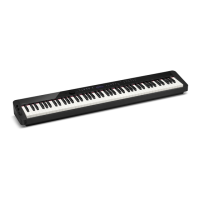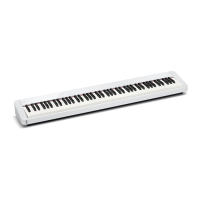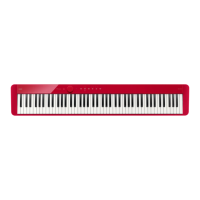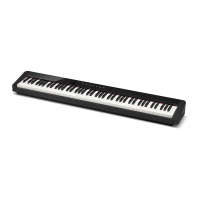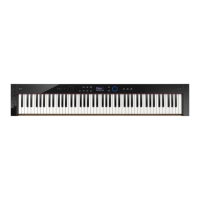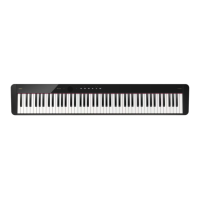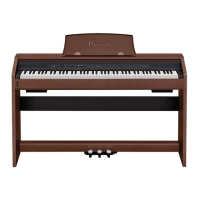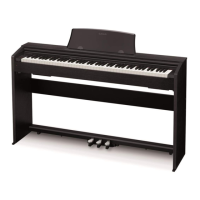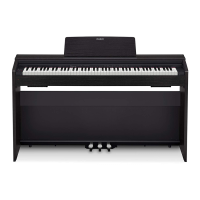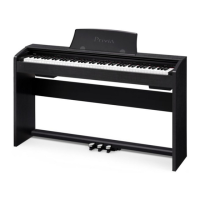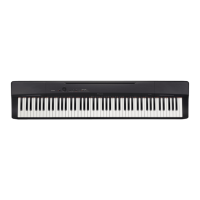EN-23
Digital Piano Operations
A DSP (Digital Signal Processor) is a type of effect that is
connected between the sound source and output. Included
are equalizer, tremolo, limiter, wah, etc. In addition to the
default DSPs*
1
assigned to each of the tones, your Digital
Piano also offers a selection of 100 preset DSPs*
2
from which
to choose. You can also configure DSP parameter settings.
*1 DSPs that are pre-assigned to each tone based on
suitability. Some tones do not have a default DSP
assigned.
*2 DSP in addition to the default DSPs, which can be
assigned to any tone.
■ To select a DSP
1.
Use the procedure under “To select a tone”
(page EN-15) to select a tone.
2.
Use the bp^ button to cycle through settings
until the “^CTRL” indicator to the right of the
button is lit.
3.
Touch bq DSP.
This displays the name of the DSP assigned to the tone
you selected (Upper1 tone) in step 1 of this procedure.
• If the current DSP is the default, the word “Tone” will
be shown on the display.
4.
Use the bk – and bl + buttons to select a DSP.
• For the names of all the selectable preset DSPs and
their contents (DSP modules), see “Preset DSP List”
(page EN-79). For information about DSP modules,
see “Configuring DSP Settings” (page EN-23).
• To return to the initial default DSP, touch bk – and
bl + at the same time.
• Even if layer and/or split is enabled, the display that
appears in step 3 above shows the name of the DSP
assigned to Upper1 tone.
■ Configuring DSP Settings
The steps below are the general procedure for configuring
DSP settings.
(1) Select the default DSP or preset DSP whose settings you
want to configure.
(2) Select one of the DSP modules in the DSP you selected.
(3) Configure the settings of the parameters in the DSP
module you selected.
● Example: One DSP module: Preset DSP No.1
“Mono 1BandEQ”
● Example: Four DSP modules: Preset DSP No.27
“Re-Amp 1”
If the DSP whose settings you are configuring consists of four
modules and you want to change all of their settings, repeat
steps (2) and (3) four times, once for each module. For details
on the full procedure, see “To configure DSP settings” (page
EN-24).
• Note that any changes you make to DSP settings are
cleared whenever you turn off Digital Piano power. If
you want to retain DSP changes you make, use the
registration function (page EN-40) to save the setup so
you can recall it later.
Using a DSP
[
CTRL
]
DSP
T : 120
000 : Tone
Sound Source Output
Sound Source
Output
Compressor Amp Cab
Enhancer ToneCtrl
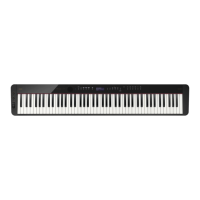
